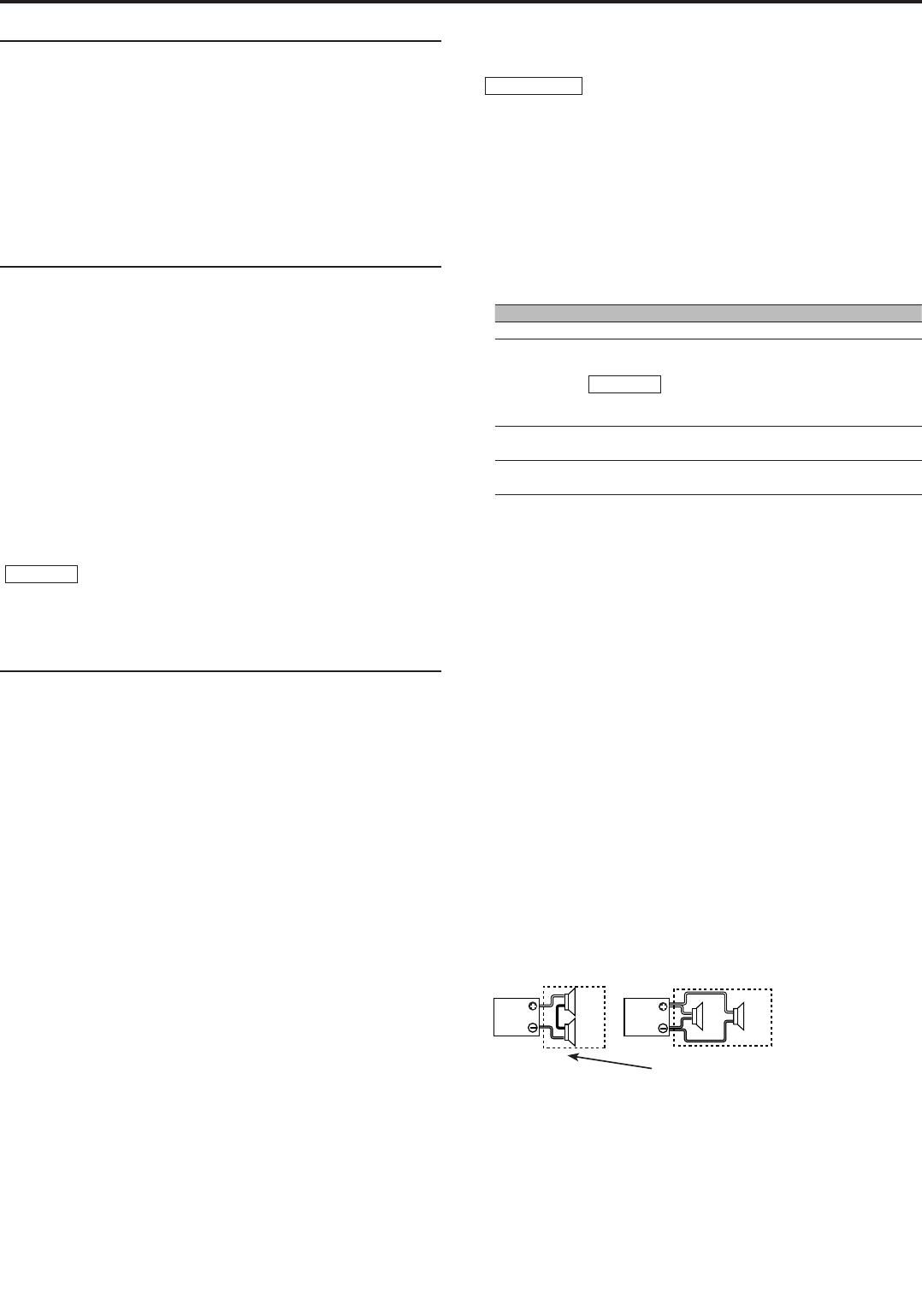
2 English
Safety precautions
2WARNING
To prevent injury or fire, take the following precautions:
• When extending the ignition, battery, or ground wires, make sure to use
automotive-grade wires or other wires with a 8 mm² (AWG 8) or more to
prevent wire deterioration and damage to the wire coating.
• To prevent a short circuit, never put or leave any metallic objects (such as
coins or metal tools) inside the unit.
• If the unit starts to emit smoke or strange smells, turn off the power
immediately and consult your Kenwood dealer.
• Do not touch the unit during use because the surface of the unit becomes
hot and may cause burns if touched.
2CAUTION
To prevent damage to the machine, take the following
precautions:
• Be sure the unit is connected to a 12V DC power supply with a negative
ground connection.
• Do not open the top or bottom covers of the unit.
• Do not install the unit in a spot exposed to direct sunlight or excessive heat
or humidity. Also avoid places with too much dust or the possibility of water
splashing.
• When replacing a fuse, only use a new one with the prescribed rating. Using a
fuse with the wrong rating may cause your unit to malfunction.
• To prevent a short circuit when replacing a fuse, first disconnect the wiring
harness.
Available Control Units:
A KENWOOD’s LX-Bus supporting Center Unit released in 2004 or later can
control this unit. The operations of the (LX) AMP Control are explained in the
Operation Manual of the Center Unit.
NOTE
• The LX AMP and the sensor unit cannot be connected simultaneously. You
must connect any of them at a time.
NOTE
• If you experience problems during installation, consult your Kenwood dealer.
• If the unit does not seem to be working right, consult your Kenwood dealer.
Cleaning the unit
If the front panel gets dirty, turn off the power and wipe the panel with a dry
silicon cloth or soft cloth.
2CAUTION
Do not wipe the panel with a hard cloth or a cloth dampened by volatile
solvents such as paint thinner and alcohol. They can scratch the surface of the
panel and/or cause the indicator letters to peel off.
To prevent battery rise
When the unit is used in the ACC ON position without turning the engine ON, it
depletes the battery. Use it after starting the engine.
Protection function
There is a Protection function installed in the unit to protect the unit and
speakers from various problems. When Protection operates, the display informs
you of the condition.
Display Informations
"E-01" When the inside of the unit is overheating.
"E-02"
When the unit has failed and direct current voltage is generated to the speaker’s
output.
NOTE
Turn the power OFF and release the protection. If the "E-02" code does not disappear,
contact your Kenwood dealer.
"E-03"
When the speaker cord is shorted.
When the speaker output is in contact with the vehicle ground.
"VOLT" display is
blinked.
When voltage gets out of operation range.
Wiring
• Take the battery wire for this unit directly from the battery. If it’s connected to
the vehicle’s wiring harness, it can cause blown fuses etc.
• If a buzzing noise is heard from the speakers when the engine is running,
connect a line noise filter (optional) to each of the battery wire.
• Do not allow the wire to directly contact the edge of the iron plate by using
Grommets.
• Connect the ground wire to a metal part of the car chassis that acts as an
electrical ground passing electricity to the battery‘s negative - terminal. Do
not turn the power on if the ground wire is not connected.
• Be sure to install a protective fuse in the power cord near the battery. The
protective fuse should be the same capacity as the unit’s fuse capacity or
somewhat larger.
• For the power cord and ground, use a vehicle type (fireproof) power wring
cord with a current capacity greater than the unit’s fuse capacity. (Use a power
wiring cord with a diameter of 8 mm² (AWG 8) or greater.)
• When more than one power amplifier are going to be used, use a power
supply wiring wire and protective fuse of greater current-handling capacity
than the total maximum current drawn by each amplifier.
Speaker Selection
• The rated input power of the speakers that are going to be connected should
be greater than the maximum output power (in Watts) of the amplifier. Use of
speakers having input power ratings that are less than the output power of
the amplifier will cause smoke to be emitted as well as damage.
• Use speakers that have an impedance of 1Ω or greater. When more than one
set of speakers are going to be used, calculate the combined impedance of
the speakers and then connect suitable speakers to the amplifier.
4Ω
4 Ω
8 Ω
2 Ω
2 Ω
4 Ω
4Ω
4Ω
4Ω
4Ω
4Ω
4Ω
4Ω
4Ω
8 Ω
4Ω
4Ω 4Ω
4Ω
4 Ω
4Ω
4Ω
4Ω
4Ω
Combined impedance












